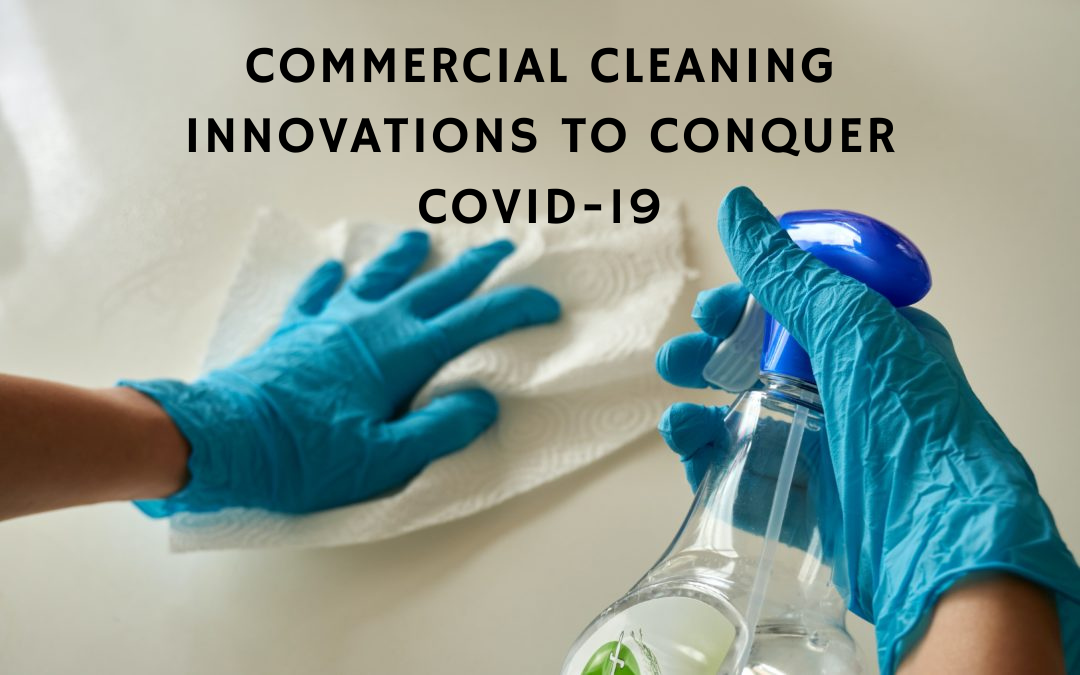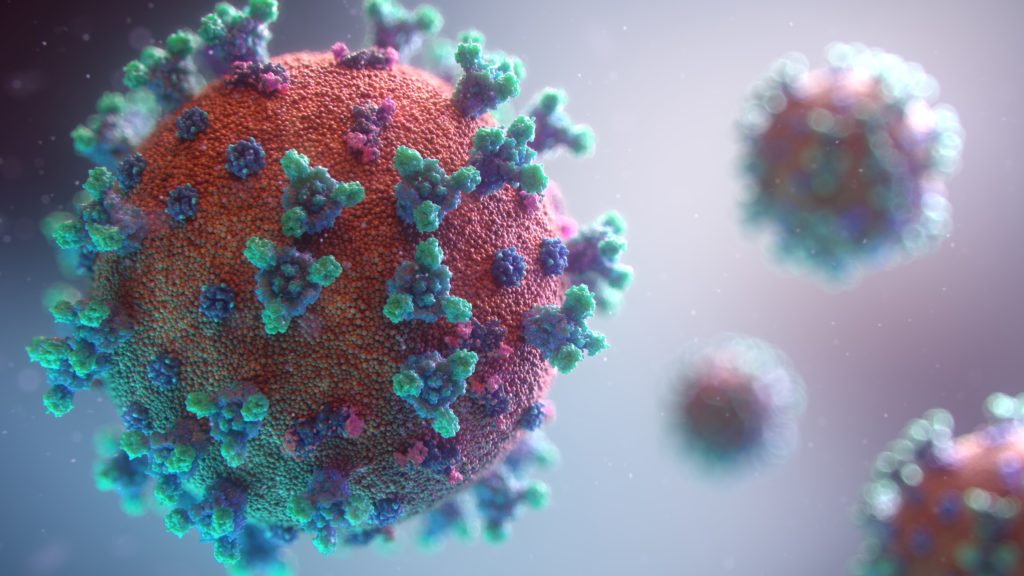These commercial cleaning innovations might not be news to the general public, but in the cleaning industry, they are pure magic.
We know it’s not typical for commercial cleaning innovations to make the news. Cable news and the big news websites all have binders full of story ideas to cover before they would get to the happenings of the cleaning industry. Until now.
With COVID-19 getting wall-to-wall coverage everywhere from NPR to Fox News to the Big Bend Sentinel in Marfa, Texas, it’s not hard to find stories about cleaning. Dig ever so slightly deeper, and you’ll find reports about the commercial cleaning industry, like this one from the Vineyard Gazette on Martha’s Vineyard.
Commercial cleaning innovations are more difficult to come across, even now with the world focused on cleaning and janitorial services more than ever. For those of us who do this work, however, these innovations are vital in keeping our businesses at the top. And with COVID-19, it’s especially crucial for us to stay current with the science and technology that we need not just to keep things clean, but to protect the health and wellbeing of the people who depend on us.
Keep up with your supplies, schedules, and all your custodial cleaning checklist with Janitorial Manager. Get in touch today for a free, no-obligation demo and learn how it works.
What is COVID-19?
By now, you know what COVID-19 is in terms of infection. But before we get to the commercial cleaning innovations, it’s essential to understand some of the science of COVID-19, starting with the name of the virus. If you follow some of the references in this story, you’ll find that COVID-19 is called by different names. There’s a reason for that. The family tree, if you will, of the virus looks something like this:
Coronavirus ––> SARS-CoV-2 ––> COVID-19
Coronavirus is a family of viruses, some of which cause the common cold. All coronaviruses have a similar structure, and they are all “enveloped” viruses, meaning they can easily stick to surfaces, according to Dr. Clayton Cowl, chair of the Mayo Clinic’s Division of Preventative, Occupational and Aerospace Medicine.
Within that family, there is the novel (new to humans) virus known as SARS-CoV-2 (severe acute respiratory syndrome coronavirus 2). That virus causes the disease we know as COVID-19, or coronavirus disease 2019.
For the sake of ease, however, even though we may use all three terms here, unless otherwise noted, you can assume it is a reference to the current pandemic virus and not the illness or other strains of coronavirus.
Here’s the critical part, though.
Because coronavirus is an envelope virus, it is, in theory, easy to kill. An “enveloped virus” is one that is protected by a thin lipid membrane. Disinfectants proven to be effective against enveloped viruses can disrupt that protective layer, in effect, killing the virus.
The caveat here is that there is still a lot we don’t know about this particular coronavirus, so to some degree, the effectiveness of virucidal agents is unproven. However, given the nature of similar viruses, the disinfectants listed by the EPA may be, in fact, effective against SARS-CoV-2.
That’s a lot of science, but to understand how to best do our jobs and keep people healthy, we have to know what we’re working with. So when doctors recommend washing your hands frequently, it’s because the soap may kill the virus by breaking down its protective layer. That’s the same science that we reference when, for instance, label indications on cleaning agents tell you that effectiveness requires three minutes of contact time.
Now here comes the fun stuff.
Why thorough cleaning is the best way to defend against the spread of COVID-19
Sometimes a picture is worth a thousand words. That’s especially true when you’re trying to visualize the spread of a contaminant like a coronavirus. You can see in this video of a simulated cough just how far the aerosol droplets can travel.
Those infected droplets, as the simulation demonstrates, might travel a significant distance and land on people, on surfaces, or get sucked into HVAC systems and spread even further that way.
That’s only one part of the equation, however.
Once those infectious droplets land, the virus may be live and contagious on smooth surfaces such as stainless steel and plastic for up to seven days. In a study published in the peer-reviewed journal The Lancet, scientists report that coronavirus could live on wood and cloth for up to two days and glass for up to four days.
It’s up to us as cleaning professionals to know this information so that we can evaluate our situations and determine if some of the commercial cleaning innovations of the last few years are workable.
Stop COVID-19 with these commercial cleaning innovations
Touch-free soap dispensers.
Touch-free soap dispensers aren’t new, but the Purell ES8 can help prevent the spread of COVID-19 because not only is it contact-free, but the transparent dispenser makes it easy to see when it’s time for a refill, meaning your team doesn’t have to touch it any more than necessary.
Electrostatic sprayers.
These might be one of the most effective commercial cleaning innovations available for disinfecting spaces. Just like the droplets in the cough simulation, these aerosols will spread across large areas and get into places you simply can’t with a regular wipe. Several types of sprayers are available, including corded, cordless, handheld and backpack models, and rolling cart systems. Your specific situation will determine which version is best, but like anything, always remember that you get what you pay for.
Cloud-based work management systems.
The critical, practical parts of your business revolve around the basics like equipment maintenance schedules, employee reporting, and bidding. You can do all of this from any location with cloud-based software like Janitorial Manager that takes the guesswork out of your operations. An important benefit is the ability to track and manage employees with a timekeeping system that includes a clock in-clock out feature to reduce the number of people servicing a location at one time. And with inventory tracking, you’ll never have to worry about running out of those all-important disinfectants.
Commercial floor cleaning robots.
The Avidbots Neo is a commercial-grade floor cleaning robot designed to work pretty much out of the box. This would be an ideal solution in situations where the level of contamination is high. Send the robot in to start the disinfection process! The manual setting gives you the option to proceed with a human in control.
The Doodle Scrub.
The Doodle Scrub is perfect for those hard to reach places that traditional floor scrubbers won’t fit. And because you can get behind toilets and under bathroom stalls, the Doodle Scrub gives you a more hygienic clean since you don’t have to rely on manual work.
These commercial cleaning innovations are helpful in the fight against COVID-19, but they are also beneficial to your cleaning business at any time.
Make sure your cleaning team has the information they need to complete their job accurately and thoroughly. Using a janitorial software like Janitorial Manager can effectively transform your cleaning operation!


